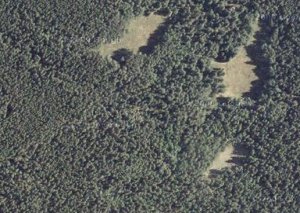Data in its native state is flawless
Posted: July 8, 2011 Filed under: Uncategorized | Tags: data, experience, forest, knowledge, native state, perception, perfect, real, sense, transform Leave a commentThis is the rock on which the church is built, ladies and gentlemen. Data in its native state is flawless.
By this, of course, I mean “that which can be sensed or experienced in the real world is what it is, independent of subsequent manipulation”. Now it’s true, what I’m talking about here isn’t actually DATA – you will not, ever see a wheelbarrow full of data sitting out in the middle of a field, rolling down a highway, or voting. What we consider “data” is an abstract representation of something that can be sensed or experienced, though, and it is in the sensing or experiencing that “what’s out there” begins to be seen as something more than an existential phenomenon.
Let’s take an example.
Pitkin County, Colorado is heavily forested: its area includes one National Forest and four named wilderness areas. From the air, much of Pitkin County looks like this:
This picture (from Google maps) is data. It is a direct representation of something that can be sensed or experienced in the real world.
This particular type of data can be pretty, but most of the time not really useful. When we manipulate it, though, it gains significance and utility. For instance, someone could take this picture, measure the sides and count the trees, and derive a number that would represent “trees per acre”. This would be information: it has significance brought about by aligning the original data to an external environment.
Assuming that this picture is of private land, the owner could take that information and combine it with other information (such as the price of lumber) and estimate of how much the timber on his land is worth. This is knowledge.
Based on this knowledge, the owner could then make a business decision whether to harvest his timber and sell it, or whether to let it mature for another season. Making that decision is the reason why the owner needed the data in the first place. Without the data, he would not have had the information needed to give him the knowledge that would enable him to make his business decision.
The data itself – the picture – is a representation of something – the trees – which exist in the real world. You can go out there in the middle of the forest and put out your hand and feel the bark. You can hear the birds above and your feet could crunch the dead leaves below. It’s a forest, it’s real, and before anybody takes a picture of it or otherwise represents it for a decisionmaking process, it is flawless.
There are no errors in data when the data exists in its native state.

Recent Comments